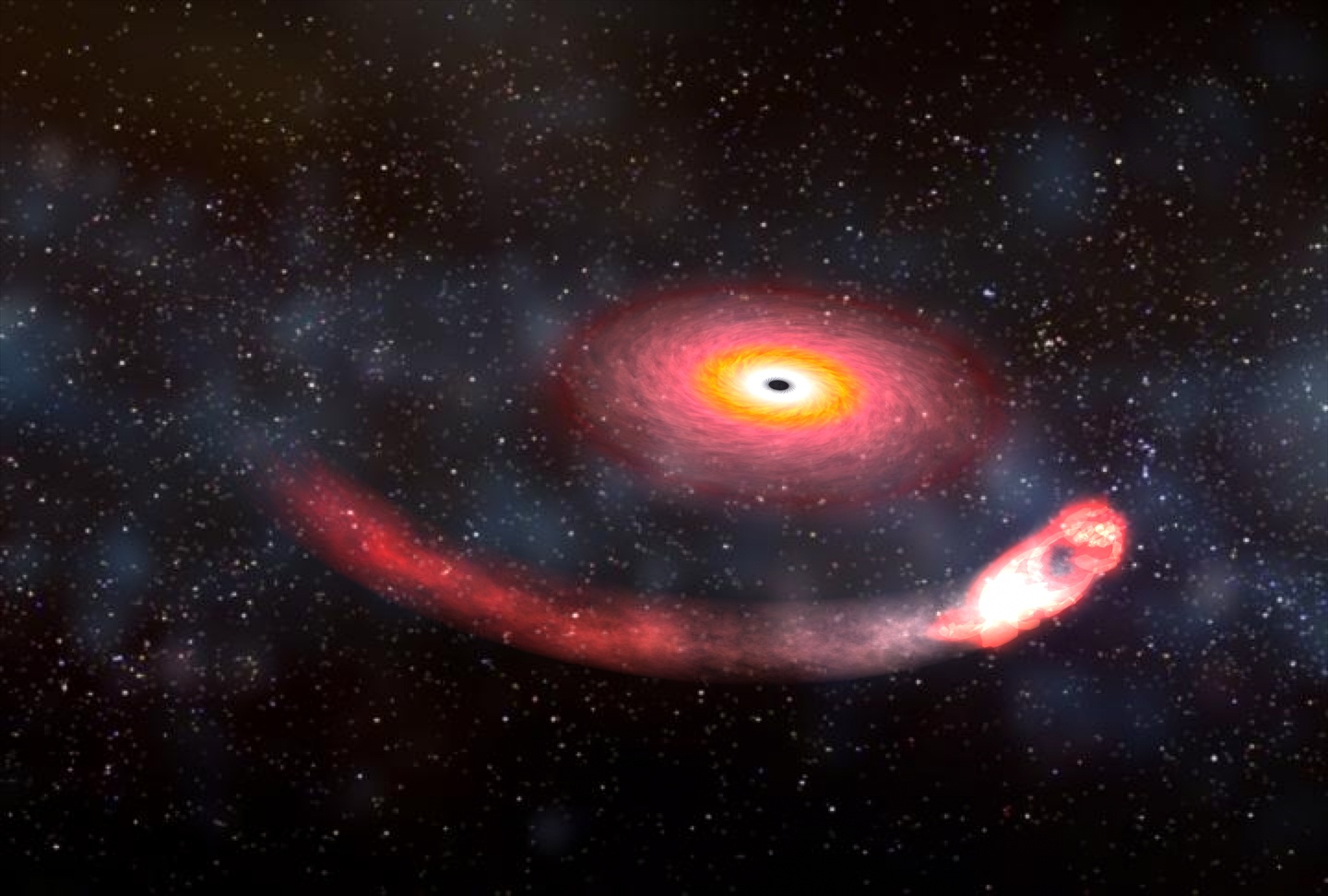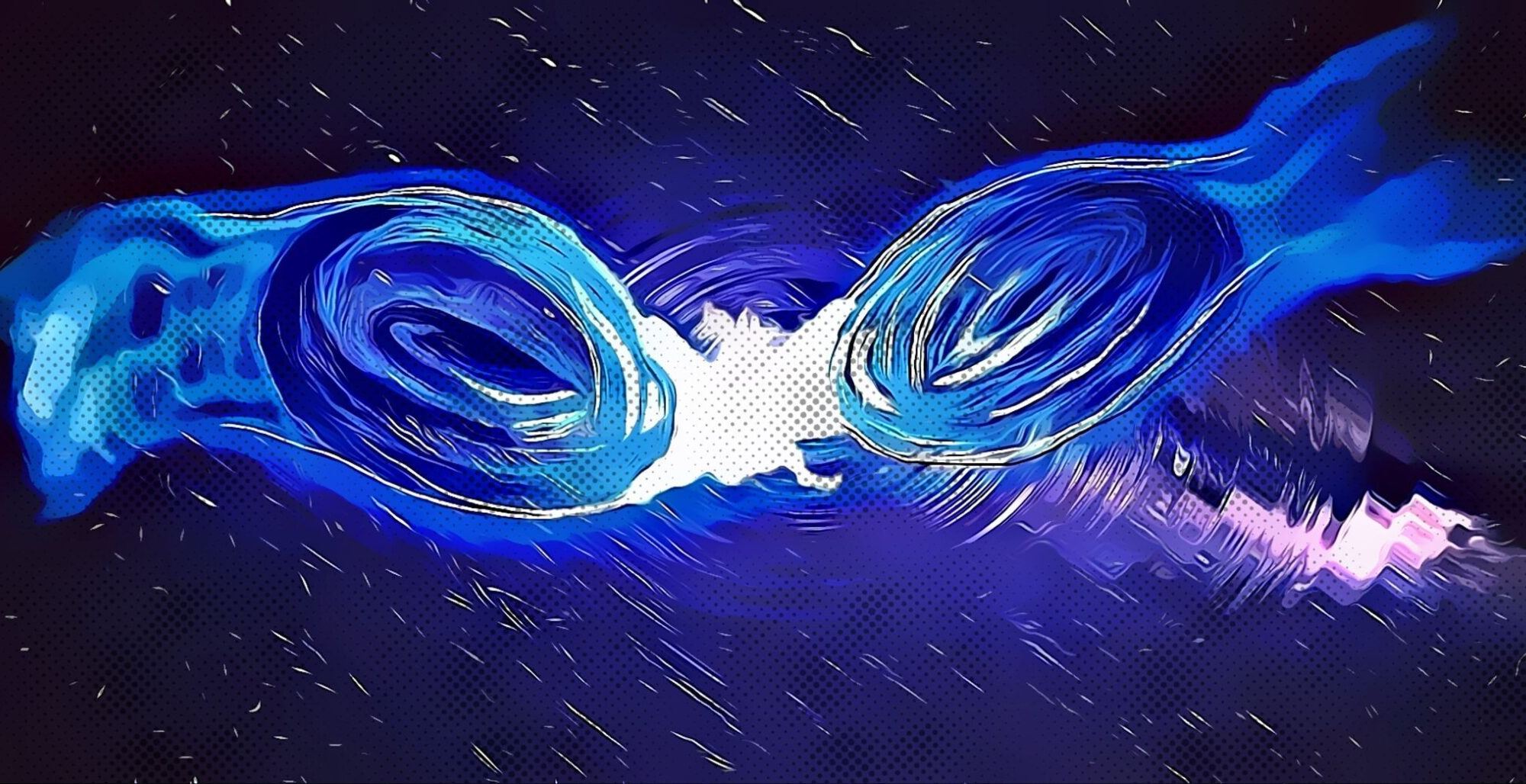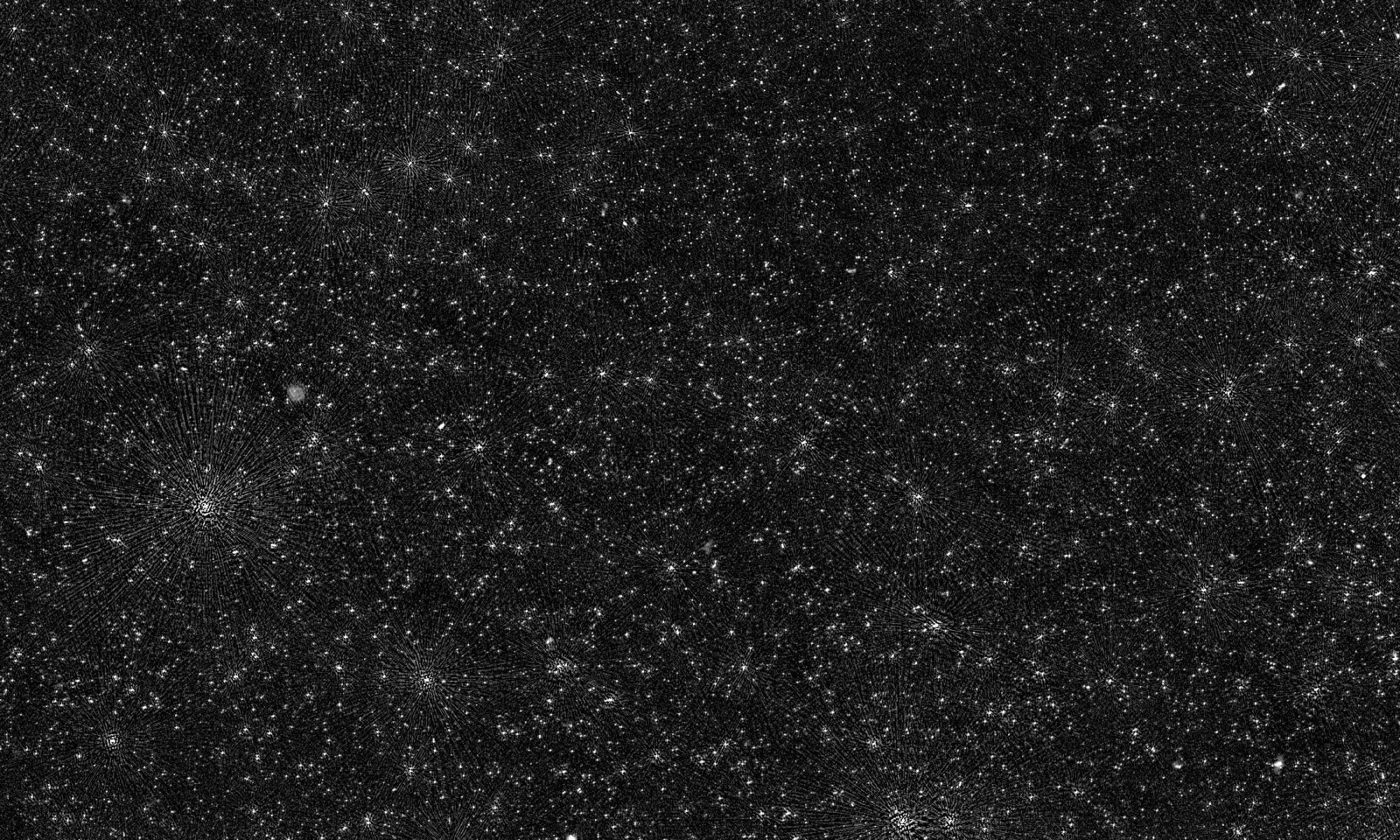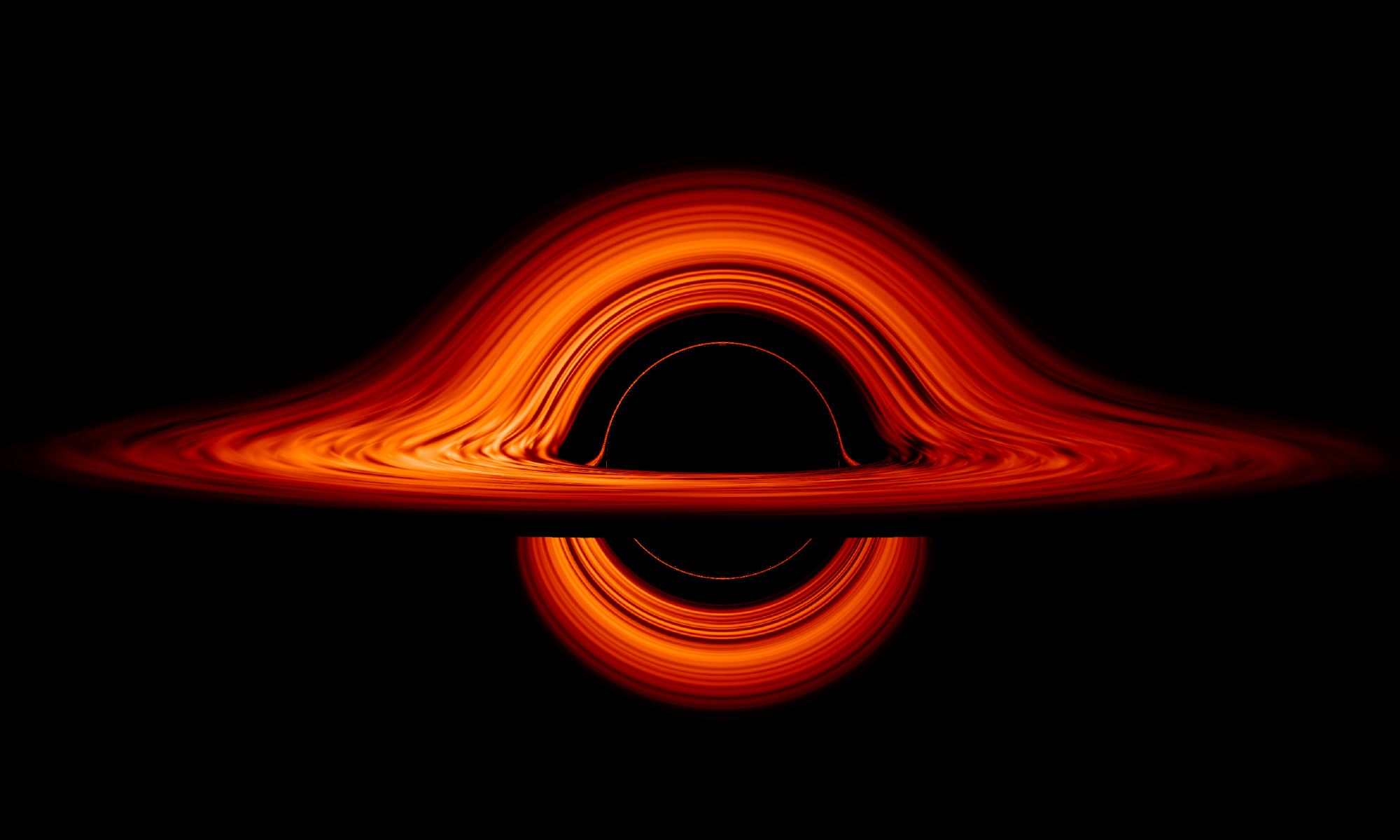Back in 2019, the world was treated to the first ever image of a black hole, which was originally captured in 2017. The feat was widely heralded as a leap forward for astrophysics, supporting Einstein’s Theory of Relativity. Now a team led by the Radboud University proposes sending instruments into space to estimate black hole parameters more accurately by an order of magnitude. The newest paper, led by Dr. Volodymyr Kudriashov, translates science goals into technical requirements and focuses on the instrumentation needed for the Event Horizon Imager, as the mission is called.
Continue reading “Space Telescopes Could Provide Next-Level Images of Black Hole Event Horizons”Whether They’re Stellar-Mass or Supermassive, Black Holes Behave Pretty Much the Same Way
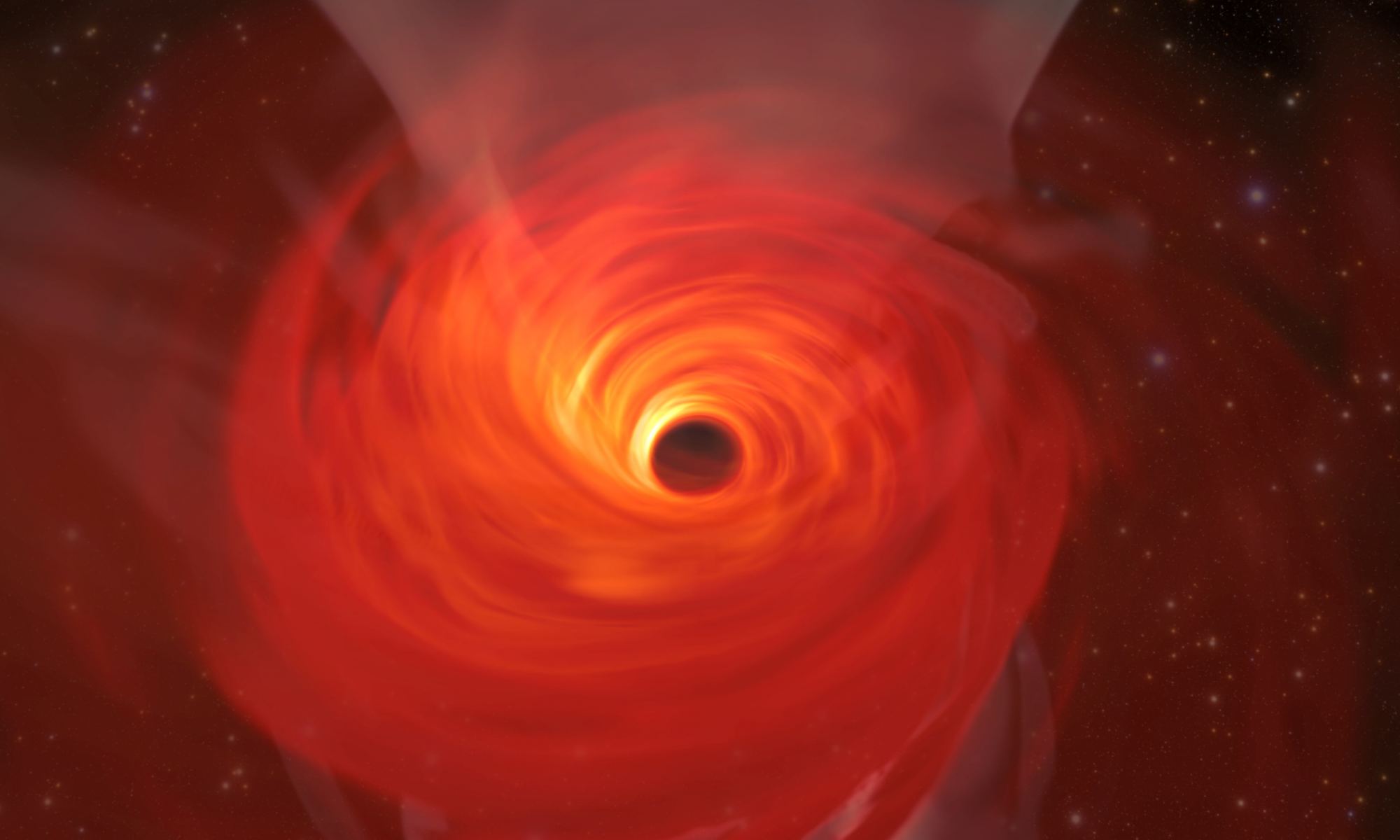
Astronomers recently caught a supermassive black hole gulp down a star. It flared in exactly the same way as its smaller cousins do when those black holes have a snack. It just took longer and was a million times brighter.
Continue reading “Whether They’re Stellar-Mass or Supermassive, Black Holes Behave Pretty Much the Same Way”Scientist sees deep meaning in black holes after Event Horizon Telescope’s triumph
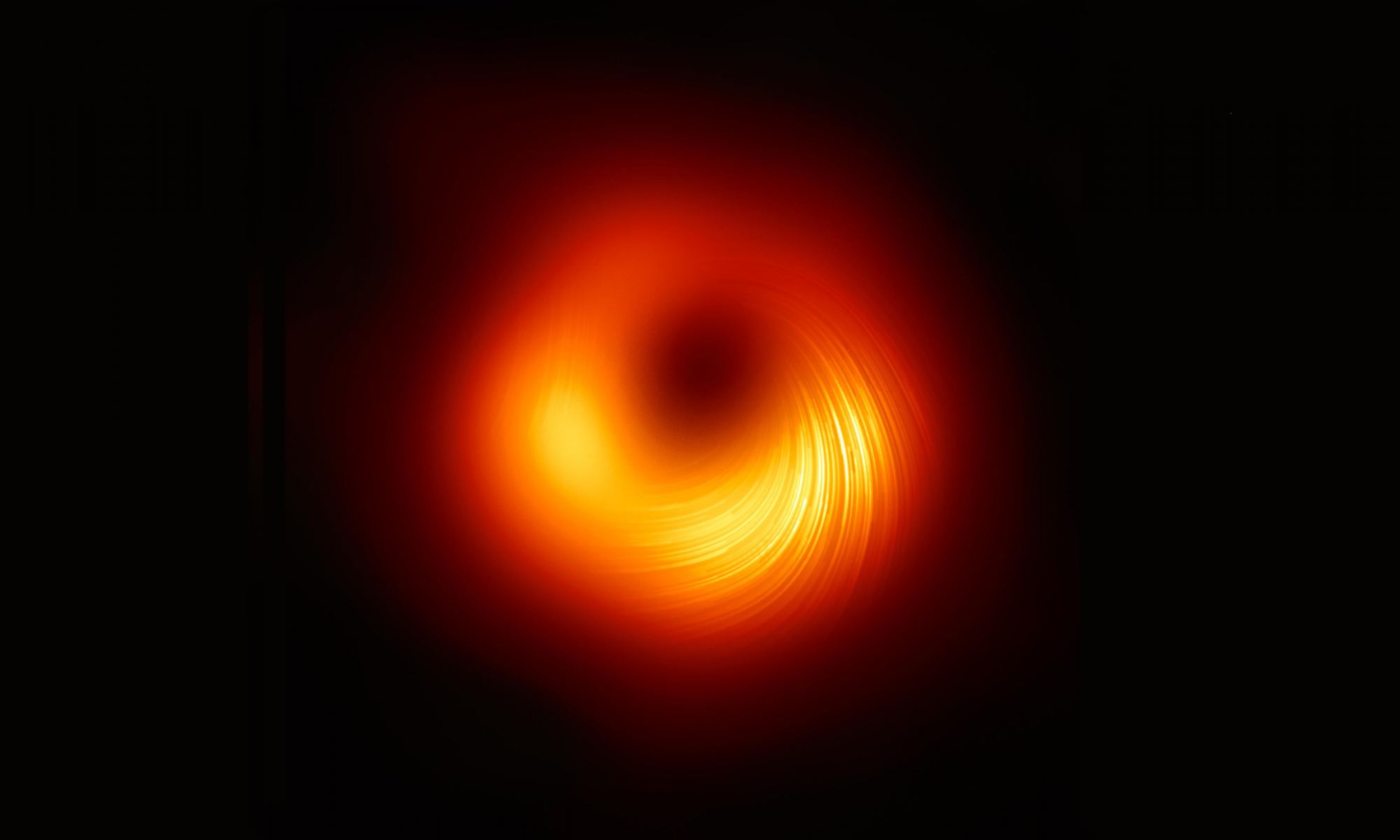
Why are black holes so alluring?
You could cite plenty of reasons: They’re matter-gobbling monsters, making them the perfect plot device for a Disney movie. They warp spacetime, demonstrating weird implications of general relativity. They’re so massive that inside a boundary known as the event horizon, nothing — not even light — can escape its gravitational grip.
But perhaps the most intriguing feature of black holes is their sheer mystery. Because of the rules of relativity, no one can report what happens inside the boundaries of a black hole.
“We could experience all the crazy stuff that’s going on inside a black hole, but we’d never be able to tell anybody,” radio astronomer Heino Falcke said. “We want to know what’s going on there, but we can’t.”
Falcke and his colleagues in the international Event Horizon Telescope project lifted the veil just a bit two years ago when they released the first picture ever taken of a supermassive black hole’s shadow. But the enduring mystery is a major theme in Falcke’s new book about the EHT quest, “Light in the Darkness: Black Holes, the Universe, and Us” — and in the latest installment of the Fiction Science podcast, which focuses on the intersection of fact and science fiction.
Continue reading “Scientist sees deep meaning in black holes after Event Horizon Telescope’s triumph”Black Hole-Neutron Star Collisions Could Finally Settle the Different Measurements Over the Expansion Rate of the Universe
If you’ve been following developments in astronomy over the last few years, you may have heard about the so-called “crisis in cosmology,” which has astronomers wondering whether there might be something wrong with our current understanding of the Universe. This crisis revolves around the rate at which the Universe expands: measurements of the expansion rate in the present Universe don’t line up with measurements of the expansion rate during the early Universe. With no indication for why these measurements might disagree, astronomers are at a loss to explain the disparity.
The first step in solving this mystery is to try out new methods of measuring the expansion rate. In a paper published last week, researchers at University College London (UCL) suggested that we might be able to create a new, independent measure of the expansion rate of the Universe by observing black hole-neutron star collisions.
Continue reading “Black Hole-Neutron Star Collisions Could Finally Settle the Different Measurements Over the Expansion Rate of the Universe”Are we Seeing a Star That Just got Spaghettified?
Sometimes astronomers come up with awesome names for certain phenomena and then feel like they can’t use them in formal scientific contexts. Tidal Disruption Events (TDEs) are one of those – colloquially they are known as “spaghettifications” where a star is pulled apart until its constituent matter looks like a string of spaghetti.
Astronomers have long known of this process, which takes place when a star gets too close to a black hole, but most of that knowledge has come through studying radiation bursts emitted by the blackhole as it devoured the star. Now, a team led by Giacomo Cannizzaro and Peter Jonker from SRON, the Netherlands Institute for Space Research, and Radboud University now think they have captured the first glimpses of a star actively being spaghettified around the pole of a black hole.
Continue reading “Are we Seeing a Star That Just got Spaghettified?”Roman Space Telescope Will Also Find Rogue Black Holes
In the past we’ve reported about how the Roman Space Telescope is going to potentially be able to detect hundreds of thousands of exoplanets using a technique known as “microlensing”. Exoplanets won’t be the only things it can find with this technique though – it should be able to find solitary black holes as well.
Continue reading “Roman Space Telescope Will Also Find Rogue Black Holes”An Exotic Explanation for the Most Extreme Gravitational Wave Detected so far
In May of 2019, the gravitational wave observatories LIGO and Virgo detected the merger of two black holes. One had a mass of 85 Suns, while the other was 66 solar masses. The event was named GW190521 and was the largest merger yet observed. It produced a 142 solar mass black hole, making it the first gravitational wave observation of an intermediate mass black hole. But the event also raised several questions.
Continue reading “An Exotic Explanation for the Most Extreme Gravitational Wave Detected so far”A map of 25,000 Supermassive Black Holes Across the Universe
The Low-Frequency Array (LOFAR) is a different kind of radio telescope. Although radio light has the longest wavelengths and lowest frequencies of the electromagnetic spectrum, much of radio astronomy has focused on the higher frequency end. Observatories such as ALMA study radio light at frequencies of hundreds of Gigahertz, and the VLA studies the fifty Gigahertz range, LOFAR captures radio signals below 250 Megahertz, which is in the range of the lowest radio frequencies that can be seen from Earth.
Continue reading “A map of 25,000 Supermassive Black Holes Across the Universe”When Galaxies Collide, Black Holes Don’t Always Get the Feast They Were Hoping for

What happens when galaxies collide? Well, if any humans are around in about a billion years, they might find out. That’s when our Milky Way galaxy is scheduled to collide with our neighbour the Andromeda galaxy. That event will be an epic, titanic, collision. The supermassive black holes at the center of both galaxies will feast on new material and flare brightly as the collision brings more gas and dust within reach of their overwhelming gravitational pull. Where massive giant stars collide with each other, lighting up the skies and spraying deadly radiation everywhere. Right?
Maybe not. In fact, there might be no feasting at all, and hardly anything titanic about it.
Continue reading “When Galaxies Collide, Black Holes Don’t Always Get the Feast They Were Hoping for”A New Idea to Harness Energy From Black Holes
Fifty years ago, English mathematical physicist and Nobel-prize winner Roger Penrose proposed that energy could be extracted from the space around a rotating black hole. Known as the ergosphere, this region lies just outside an event horizon, the boundary within which nothing can escape a black hole’s gravitational pull (even light). It is also here where infalling matter is accelerated to incredible speeds and emits all kinds of energy.
This became known as the Penrose Process, which many theorists have since expanded on. The latest comes from a study conducted by researchers from Columbia University and the Universidad Adolfo Ibáñez in Chile. With support from organizations like NASA, they demonstrated how a better understanding of the physics at work around spinning black holes could allow us to harness their energy someday.
Continue reading “A New Idea to Harness Energy From Black Holes”

